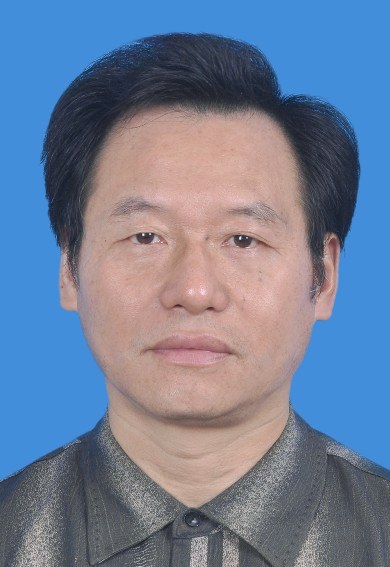Yu Xiangyong
Personal profile:
Yu Xiangyong: Male, Ph.D., born in June 1966 in Wuhan, Hubei Province, Ph.D., Institute of Hydrobiology, Chinese Academy of Sciences, former Minister of Technology Promotion Department of Guangdong Ocean Development Research Center, provincial-level training target for the “Thousand-Ten Thousand” Project of Guangdong Province, China Aquatic Products Member of the Biotechnology Professional Committee, member of the Pearl Professional Committee of China Gemstone Association. Academic leader, mainly engaged in research and development of aquatic animal breeding and breeding technology. He has rich experience in teaching, research and management of marine economic animal breeding and genetic breeding for more than 20 years. He has published more than 50 related papers, presided over and is mainly responsible for a number of major researches on shellfish genetic breeding and breeding techniques. The project and applied basic research projects, the current research focus is the genetic breeding of valuable bivalves, the research and management of algae aquaculture technology and management. Teaching courses in Genetics, Aquatic Breeding, Ornamental and Decorative Marine Life, and Marine Development and Management.
Awards, honorary titles:
1. In 2003, the first prize of Zhanjiang Science and Technology Progress Award, “Penguin Pearl Shell Full Artificial Breeding, Pearl Breeding and Breeding Demonstration and Promotion”;
2, Zhanjiang Science and Technology Progress Award, 2006, “Pearl Bay Seed Germplasm Rapid Purification Technology” The second finisher.
Research areas:
The following important contributions in the research of genetic breeding and breeding of ecological shellfish and the development of ecological farming technology: the
use of artificial breeding seedlings to develop pro-bei, the first stable production technology of large-scale rare species Penguin pearl seedlings, and its production development and resource protection Significant; related technologies have reached the scale of production. For the first time, the technology of producing free pearls from penguin pearl shells was successfully developed in the pearl pearl species that the international pearl authority claimed to be impossible to produce free beads. It is a major technological breakthrough in pearl production and new varieties development.
Developed techniques and methods for cryopreservation, re-insemination and embryo culture of sperm cells, and established inbred line breeding methods in P. martensii. The use of self-fertilization to rapidly purify the germplasm of the mother-of-pearl germplasm has no precedent at home and abroad, and is a major technological innovation in pearl-shell breeding.
To study the theory of using environmentally friendly organisms (mainly filter-feeding shellfish and algae) to improve water environment and ecological restoration, and to develop a technology that utilizes the growth of seaweed to maintain water environment stability and reduce water pollution and to apply it in many fields.
Research projects:
1. (Ministry of Agriculture) Public welfare industry research project (200903028) Penguin pearl shell high value pearl cultivation technology
2. Guangdong Ocean and Fisheries Bureau A200908A091 Penguin pearl shell high value shaped pearl breeding family oriented breeding
3. National 863 plan Marsh Pearl Beixing Genetic Improvement Technology Sub-project
4. National Spark Program Penguin Pearl Bay high-grade pearl breeding, promotion and comprehensive processing of by-products
5. National Spark Program Pearl Bay Variety Promotion and High-quality Pearl Culture Demonstration
6. Guangdong Science and Technology Plan Penguin Pearl Shell Breeding and Bead Culture Technology Research
7 Research and promotion of penguin pearl shell culture and pearl breeding technology for key projects of the Provincial Fisheries Bureau
8. Zhuhai Wanshan Development Zone Research and promotion of shellfish ecological aquaculture technology
9. Proliferation and high-quality utilization of marine life resources in Wanshan Islands, Wanshan Development Zone, Zhuhai Plan
10. Technical research on the use of the beetle breeding system to maintain the stability of the external water environment of the “Nanhai No. 1” ancient shipwreck
Published papers:
First or Corresponding author
[1]. Yu Xiangyong*. The occurrence of germ cell of penguin pearl shell[J].Journal of Guangdong Ocean University. 2009,29(6):32-35
[2]. Yu Xiangyong, Luo Jianren, Wang Meifang, Zhu Xinping,
Liang Feilong,Liu Yong.Establishing the pearl beetle seed quality guarantee system to lead the pearl industry revitalization with innovation[J] .Marine and Fisheries,2007,7:22-25 [3]. Yu Xiangyong, Wang Meifang, Liang Feilong, Liu Yong. Different organizations of penguin pearl shell Differences in expression of isozymes[J]. Chinese Journal of Fisheries Sciences, 2005, 12(2): 201-206
[4]. Yu Xiangyong, Wang Meifang, Chen Gangrong, Liu Yajing, Zhang Chunfang. Main effects of cryopreservation of spermatozoa Research on factors[J].Journal of South China Agricultural University(Natural Science Edition), 2005,26(3):96-99
[5]. Yu Xiangyong, Liu Yong, Feng Yicheng, Wang Meifang, Liang Longfei. Low salinity seawater survives on penguin pearl shell Influence [J]. Journal of Zhanjiang Ocean University, 2005, 25(4): 22-26.
[6]. Yu Xiangyong, Wang Meifang, Liu Yong, Liang Feilong, Mao Yong, Gui Jianfang. Penguin pearl shell isozyme zymogram Characteristics and genetic analysis[J]. Journal of Fisheries of China, 2004, 28(4): 375-383
[7]. XiangYong YU, Yong MAO, MeiFang WANG, Li ZHOU and JianFang GUI (Yu Xiangyong, Mao Yong, Wang Meifang, Zhou Li, Gui Jianfang.). Genetic heterogeneity analysis and RAPD marker detection among four forms of Atrina pectinata L. [J]. J. of Shellfish Res. 2004 23 (1): 165-171 (SCI Included)
[8]. Yu XY; Wang MF; Liang FL; Liu Y; Gui JF (Yu Xiangyong, Wang Meifang, Liang Feilong, Liu Yong, Gui Jianfang.). The Farming of and Pearl Cultivating from the Wing Oyster Pteria penguin. Global Aquaculture Advocate J. of Shellfish Res. 2004 23 (1): 319
[9]. Yu Xiangyong. Suggestions for the development of pearl industry in Guangdong Province Aquatic Technology 2003. (1): 1~4
[10]. Yu Xiangyong. New Trends in World Pearl Culture Research [J]. Fisheries Modernization, 2002, (5): 25-26
[11]. Yu Xiangyong, Ye Fuliang. Black Disc Shell Culture and Black Pearl Cultivation Aquatic Technology 2002 (4): 21-24
[12]. Yu Xiangyong* Wang Meifang Chen Wenhan Liang Feilong Liu Yong and so on. Analysis of the status quo of Nanzhu industry and its revitalization measures [J] Ocean and Fisheries,
2008, 9 :7-10 [13]. Yu Xiangyong, Wang Meifang, Ye Fuliang. Individual occurrence and artificial breeding of penguin pearl shell[J]. Journal of Hainan University (Natural Science Edition), 2000, 18(3): 266-269.
[14]. Yu Xiangyong, Wang Meifang, Li Hongwu, Cai Yingya. Comparative Study on the Morphological Differences of the Unsalted Quercus sinensis[J]. Tropical Ocean, 2000, 19( 2): 39-44.
[15]. Study on the processing technology of Marsh's mother-of-pearl cells and the treatment of pearl nucleus I. Effect of different treatment solutions on the pearling of Hainan Lingshui[J]. Journal of Guangdong Ocean University, 2010, 30(4):11-16
[16]. Advances in research on small pieces and processing technology of Yubeibei cells[J]. Journal of Guangdong Ocean University, 2010, 30(4): 86-90
[17]. Cellularogenesis and female gonadal histology of Cellana grata[J]. Journal of Hydrobiology, 2010, 34(5): 913-921
[18]. Difference analysis of isozymes between progeny and penguin pearls[J]. Journal of Agricultural Biotechnology, 2005, 13(6): 777-782
[19]. Bivalvular transformation phenomenon and its mechanism [J]. Aquatic organisms Journal, 2007, 31(4): 576-580
[20]. Cloning and sequence analysis of three DM domains of P. martensii[J]. Journal of Agricultural Biotechnology, 2007, 15(5): 905-906 .
. [21] cloned pearl oyster Dmrt5 gene expression pattern and timing [J]. aquatic Biol, 2009,33 (5): 844-850




